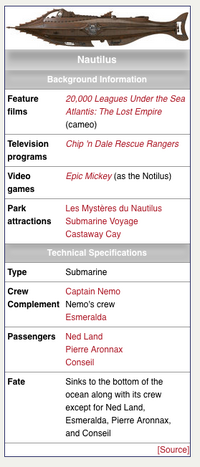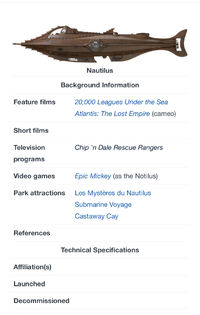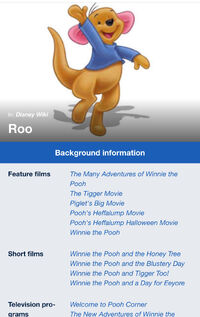What can portable content do for my community?[]
Content portability, and portable inboxes, are focused on two goals:
- Organizing data on Fandom in a way that will let us build some really cool features
- Separating content (text, images, video, other pieces of information) from presentation (layout, color, styling, CSS)
The following are the benefits of these goals.
This system of data organization at Fandom will allow us to build some powerful features[]
The short term for this is "semantic data". As Fandom has grown, each community has evolved its own way of documenting information. This documentation consists not only of names and facts, but also the relationships between all of those things (such as familial relationships between characters or how various weapon combinations can have different effects). There are many examples of this across communities, but sometimes the relationships are hard to understand unless you take the time to learn about each community's special system.
If communities on Fandom start using a common language — the portable infobox code — it becomes possible for other programs to understand the information in better ways, and that’s when cool stuff can start to happen. Some examples:
- Content from TV communities could be displayed to users on review sites (such as Rotten Tomatoes) or as part of TV viewing guides (from manufacturers like Sony). Both of those examples are real things that Fandom has attempted in the past, but encountered problems due to the lack of a consistent data structure across Fandom.
- Contribution tools that allow new editors to add information in the right format, because they see only pre-determined options. For example, an admin on the Lord of the Rings Wiki could establish that when a new character page is added, the editor must choose the character’s race from just a few options (e.g. Men, Elves, Dwarves, Hobbits, Orcs). This avoids editors not knowing (for the example of Men) if they should use Men, Human, Atani, Afterborn or some other name.
- Much more specific recommendations for what visitors can read next, to help keep them on your community or on the Fandom network. For example, if a visitor was reading an article about the actor Chris Pratt on the Marvel Database, they would see suggested reading about other Marvel movies Chris appeared in, or other stories that include the Star-Lord character. And there would be additional recommendations for articles on Parks & Recreation Wiki, Jurassic Park Wiki or Brickipedia (all of which have articles about Chris and/or characters he played). A common data structure makes it much easier for recommendation systems to find "things related to Chris Pratt" on Fandom.
The portable infobox code is part of the foundation that will allow this global data system to work. We’re already getting started on it!
Separating of content from presentation[]
There are many different ways to view information from Fandom. Right now the primary ones are on desktop/laptop computers, on tablets, and on smartphones (either in a web browser or using a Fandom app). But there are more ways, and Fandom doesn’t always look great on all of them. Ever tried to browse a Fandom community using the Steam browser? Or on your Nintendo DS? Or even on an Apple Watch? These various presentation options, and others that may come along in the future, have very different needs.
As communities have evolved and created their own themes and designs, very often the code that determines how things are presented (HTML and CSS) is mixed into the wikitext along with the article content. This works well on desktop computer screens, but other devices that display article pages don’t always handle this mixing very well. Things can look broken or misplaced, because the content can’t be separated from the presentation. You can read even more about this in the User blog: Why You Should Avoid Inline Styles.
The immediate benefit of making the separation will come as the mobile skin evolves. Fandom is working to make your content thrive on an ever-increasing number of devices. Communities with portable infoboxes are better positioned to take advantage of that. Below are examples of an infobox on the desktop, a non-portable infobox on a phone, and a portable infobox on a phone.

Desktop infobox: Here's the infobox on the Disney Wiki's page about the Nautilus. It's a great infobox that's very easy to read — as long as your only concern is the desktop.

Non-portable infobox on a phone: Here's the same infobox on a phone. As compared with the desktop version, notice how it's displaying variables that are actually empty.

Portable infobox on a phone: Compared with the non-PI of the Nautilus, the presentation of the infobox has greater visual impact, and it's easier to associate the value of a variable with the label.
In the future, the layout benefits of having portable infoboxes will extend to mobile apps and even to the desktop skin. Features related to theming and layout management will also be developed with the assumption that presentation is handled outside of content.
Another benefit is to your less technically inclined community members, especially the new contributor whose first experiences will determine if he or she returns. Removing CSS and HTML from individual pages makes the editing experience more intuitive for the newer people. Having a common markup language also makes it easier to share themes between communities.
The Portability Hub you're reading right now has lots of further information and places to ask questions.
You can help get your community ready for this future by starting to use portable infoboxes!
